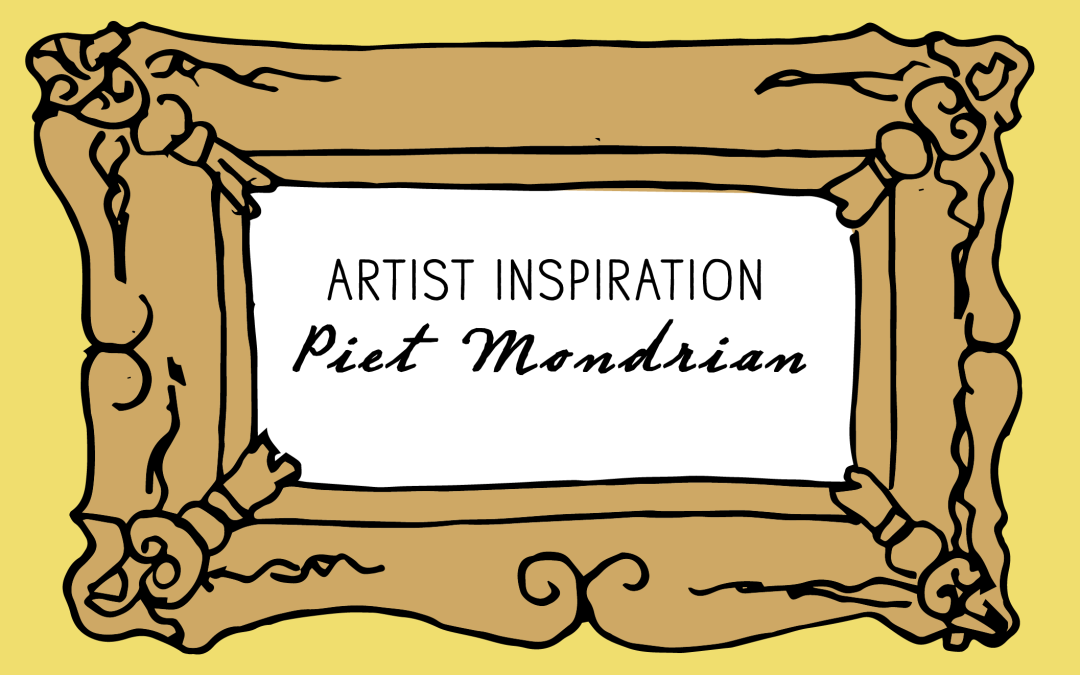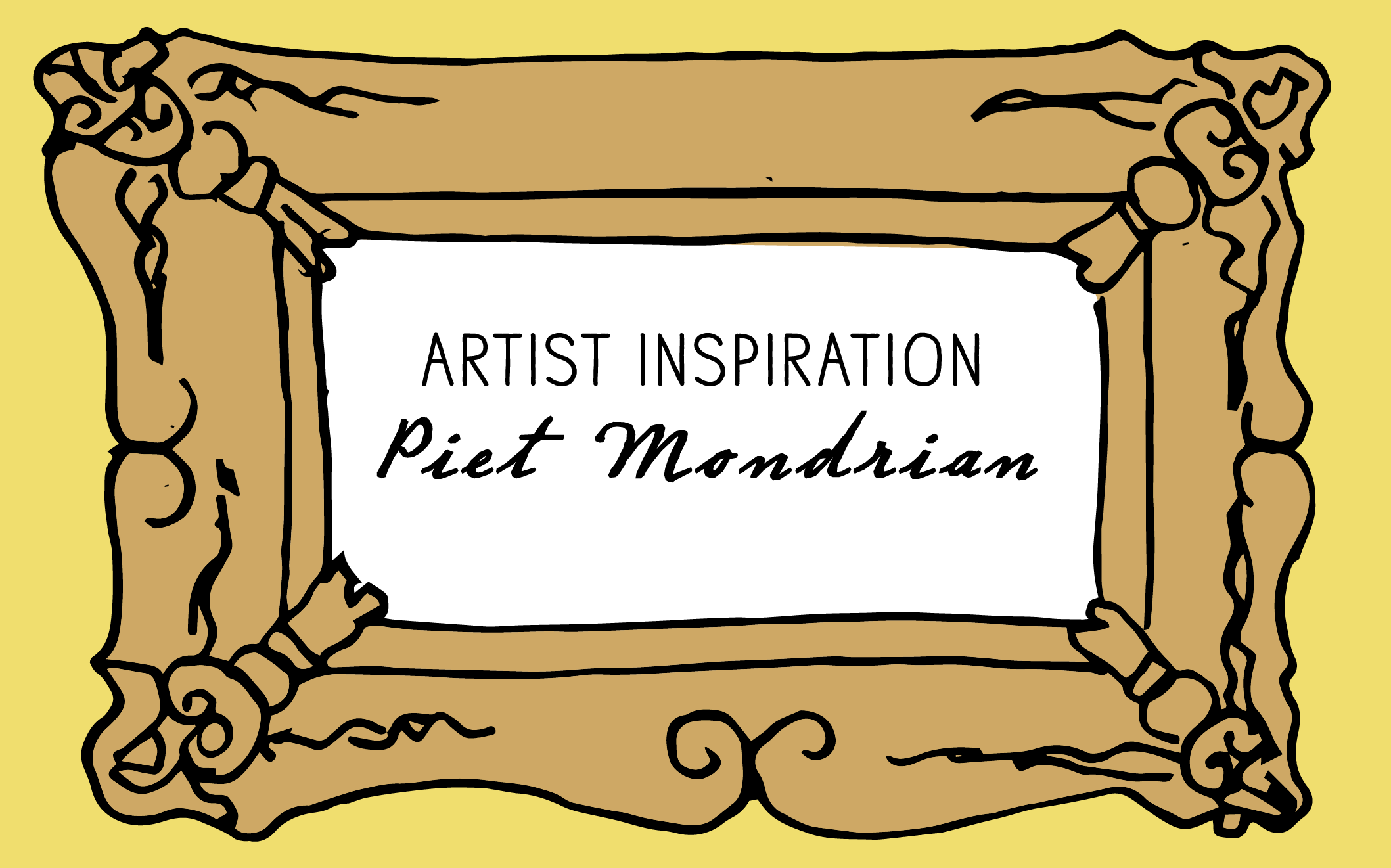
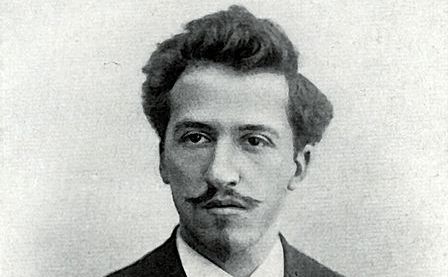
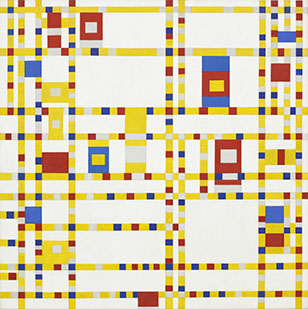

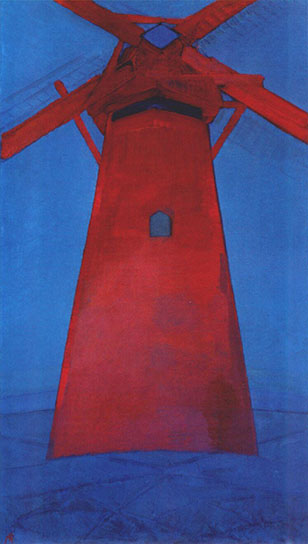
Pieter Cornelis “Piet” Mondriaan, after 1906 Mondrian (1872–1944) was Dutch painter and a major contributor to the De Stijl(The Style) art movement. His work evolved from there to a non-representational form which he termed neoplasticism, which he is most famous for. Neoplasticism is working that consisted of a white ground, upon which he painted a grid in three primary colors.
His work started off as naturalistic or impressionistic, consisting of landscapes, and pastoral scenes, but shifted to the more avant-garde in the early 1900’s. His work was closely tied to his spiritual and philosophical studies that he started in 1908, joining a theosophical movement launched be Helena Petrovna Balavatsky. Balavatsky believed that it was possible to gain a more profound knowledge of nature than simply observation, and Mondrian was inspired by this search.
Broadway Boogie Woogie, 1942 / Composition II in Red, Blue, and Yellow, 1930 / The Red Mill, 1911

